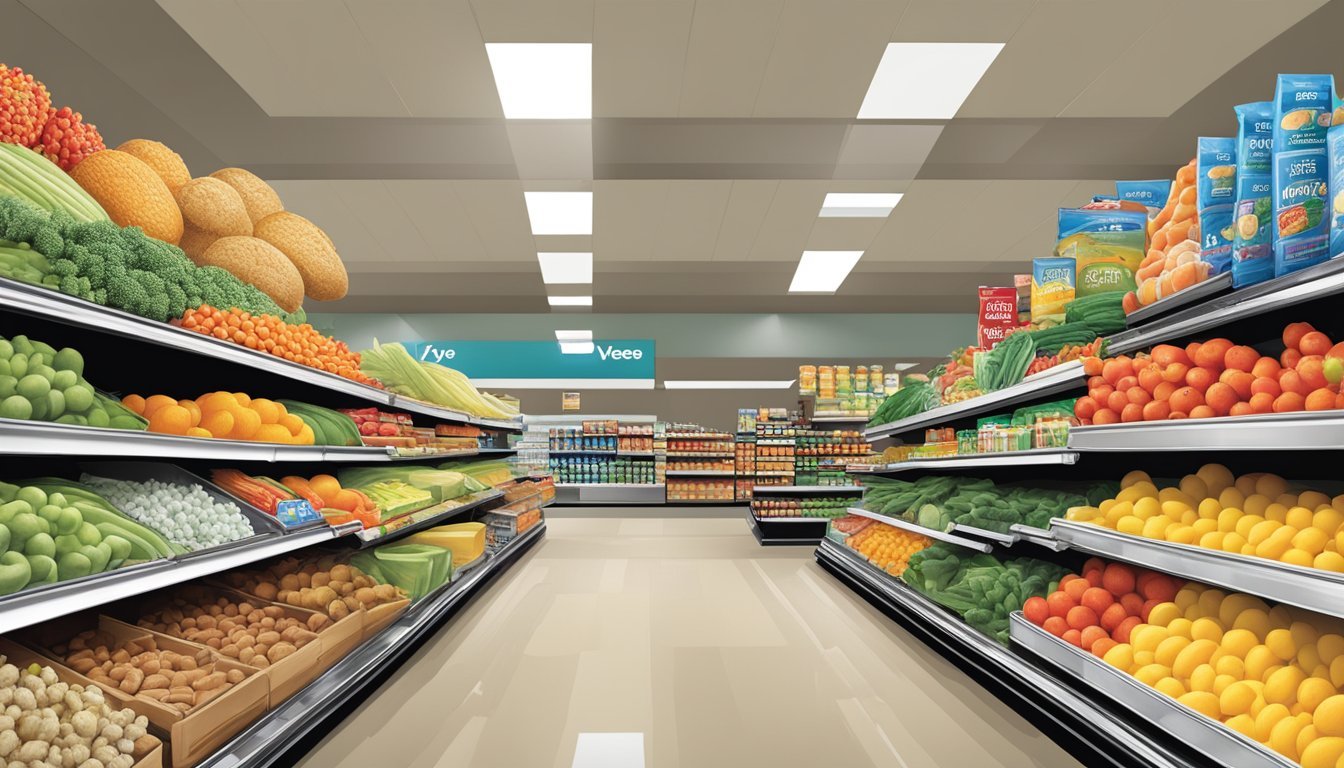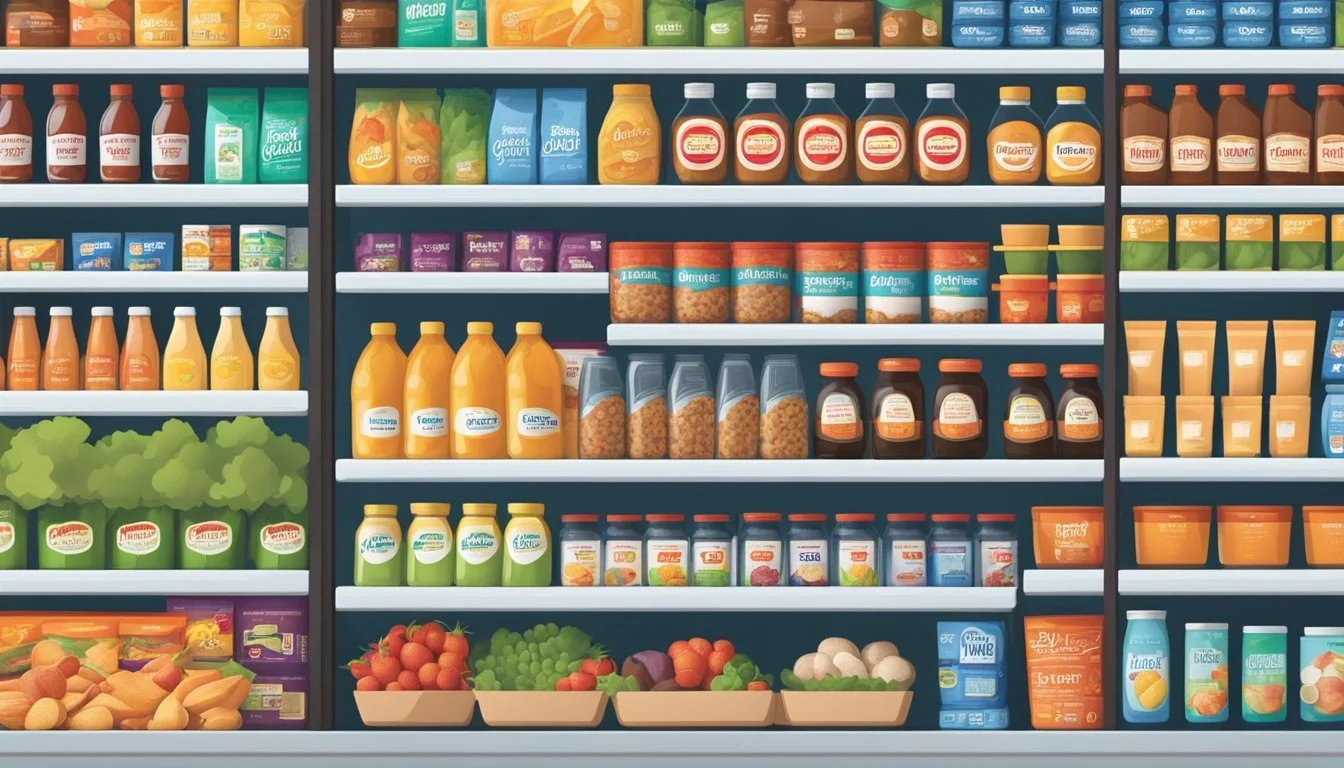Is Hy-Vee Cheaper Than Ralphs?
Assessing Grocery Pricing Trends
Part of Our Grocery Store Guide with Details on Hy-Vee Prices and Ralphs Prices
Comparing grocery store prices is a task many consumers undertake to stretch their budgets, especially when considering everyday essentials. Within the landscape of supermarkets, Hy-Vee and Ralphs are two notable names that often come up in the discussion of affordability. Many shoppers look to these chains for their weekly procurement of items such as milk, eggs, and bread, which are indicators of a store's pricing structure.
Ralphs generally emerges as the more budget-friendly option for these staples. For example, Ralphs offers milk for $2.49, in contrast to Hy-Vee’s $2.79, and extends similar savings on eggs - pricing them at $1.99 compared to Hy-Vee's $2.29. Given the frequency with which consumers purchase these items, such differences can significantly impact a household’s grocery bill over time.
The competition between supermarkets like Hy-Vee and Ralphs is not solely about the sticker price. Factors such as store location, product quality, customer service, and shopping experience also play a role in consumer choice. Hence, while price comparisons provide valuable insights, they represent only part of the broader economic tapestry influencing shopper preferences between these grocery stores.
Comparing Grocery Pricing Strategies
When assessing the prices at Hy-Vee compared to Ralphs, a multitude of factors come into play, including store brand offerings, membership programs, and discount strategies. These components are essential in determining which supermarket offers the better value for shoppers looking to maximize savings on their grocery bills.
Price Comparison Overview
A direct price comparison reveals that Ralphs typically offers lower prices on basic staples, with milk priced at $2.49 compared to Hy-Vee's $2.79 and eggs at $1.99 versus $2.29 at Hy-Vee. This positions Ralphs as a potentially more budget-friendly option, and competitors such as Walmart and Aldi are recognized for setting a competitive price benchmark in the grocery sector.
In-Store Deals and Discounts
Ralphs, which is a part of the Kroger family, often runs promotional deals and discounts, enhancing its appeal to cost-conscious consumers. Hy-Vee, while potentially higher-priced, competes by offering special sale prices and deals to its loyal following. Both supermarkets strategize to cycle hot deals on meat, produce, and other high-demand items.
Impact of Store Brands on Pricing
Both Hy-Vee and Ralphs offer their own store brands, which are typically more affordable than national brands. Ralphs features Kroger-affiliated brands, while Hy-Vee offers in-house labels. Shoppers buying store brands can often find savings comparable to those at Aldi and Walmart, known for their emphasis on value with labels like Simply Nature.
Frequent Sale Items and Loss Leaders
Supermarkets like Ralphs and Hy-Vee often use loss leaders—products sold at a loss to attract customers. For example, deeply discounted vegetables or fruit can serve as an incentive for shoppers to visit, with the anticipation that they will purchase additional items at regular prices.
Membership and Loyalty Programs
Membership and loyalty programs also play a critical role in retaining customers and offering exclusive discounts. Ralphs utilizes a Kroger-linked loyalty system, issuing personalized offers, while Hy-Vee's offers a perks program. While Amazon Prime members benefit from deals at Whole Foods, each supermarket aims to create its own sense of community offering through unique membership perks.
Quality and Assortment of Products
When comparing Hy-Vee and Ralphs, it is important to consider the quality of produce and meats they offer, their range of organic and specialty items, and the variety of their store brand assortments. These factors are essential for consumers who value fresh, high-quality groceries and diverse product options.
Produce and Meat Quality
Both Hy-Vee and Ralphs grocery stores take pride in providing consumers with fresh and high-quality produce and meats. Hy-Vee often emphasizes its commitment to fresh, quality offerings, particularly in the meat department, where it provides a broad selection of premium cuts. Ralphs, on the other hand, is recognized for its budget-friendly options while still maintaining a standard of quality that consumers trust.
Produce Quality: Hy-Vee places a strong emphasis on stocking fresh and high-quality produce.
Meat Selection: Ralphs offers a range of quality meat options that cater to budget-conscious customers.
Availability of Organic and Specialty Items
Organic and specialty items are increasingly important in supermarket choices. Hy-Vee and Ralphs both offer a spectrum of organic produce and specialty items, though their range and focus on these products can differ. Ralphs has been known to provide a decent selection of organic products, well-aligned with its consumer base's expectations. Hy-Vee boasts a commitment to organic and non-GMO options, potentially offering a wider variety than Ralphs.
Organic Produce: Both Hy-Vee and Ralphs feature organic produce sections, with Hy-Vee showcasing a potentially broader array.
Specialty Items: Shoppers at Ralphs can find a curated selection of specialty items, while Hy-Vee's range might appeal to a wider audience, including health-conscious consumers.
Store Brand Assortment
Store brands offer a balance between quality and value, and both supermarkets have their store-brand lines. Ralphs provides competitively priced staples such as bread and dairy under its private labels, while Hy-Vee's store brand products, highlighted in some comparison reports, span a range of grocery categories. Their quality is often compared to national brands, offering a cost-effective alternative.
Bread and Dairy: Ralphs' store brands are widely recognized for their affordability in everyday items.
Broad Range: Hy-Vee's store brands are noted for their extensive variety, catering to different customer needs.
Each supermarket's approach to quality and assortment demonstrates their understanding of their customer base and the importance of providing a combination of value and variety.
Cost-Efficiency for Households
Evaluating the cost-efficiency of grocery shopping at Hy-Vee compared to Ralphs is crucial for households looking to manage their budgets while acquiring necessary items.
Average Expenditure on Common Grocery Items
When a family visits a supermarket, they typically have a list of common items they purchase regularly. To compare the price of these items at Hy-Vee and Ralphs, consider a standardized 154-item list which includes essentials such as milk, cheese, eggs, sour cream, lettuce, peanut butter, and sandwich bread.
Price Comparison:
Item Hy-Vee Price Ralphs Price Milk (1 gallon) $3.19 $2.99 Cheese (1 lb) $4.50 $4.25 Eggs (dozen) $1.50 $1.75 Sour Cream (16 oz) $1.99 $1.89 Lettuce (head) $1.29 $1.49 Peanut Butter (16 oz) $2.49 $2.29 Sandwich Bread $2.79 $2.49
Hy-Vee and Ralphs each offer deals that can lead to savings on these common items. The table shows that prices vary between stores for different items, indicating that shoppers may benefit from comparing prices based on their specific needs.
Budgeting for Family Needs
For a family of four, meal planning might include a variety of foods spanning breakfast, lunch, snacks, frozen foods, dry goods, and shelf-stable items. Healthy food is a priority for many families, and purchasing items like fresh produce and dairy can significantly impact a family's budget.
Family of Four Average Weekly Spend:
Hy-Vee: $250
Ralphs: $245
Monthly Savings Potential by Store:
Hy-Vee: Save on bulk deals, especially when buying shelf-stable items.
Ralphs: Lower prices on select items may help in budgeting for diverse meal plans.
Families can maximize their savings by monitoring weekly deals at each grocery store and aligning their shopping habits with the store offering the best prices for their shopping list at any given time.
Consumer Perception and Ratings
When assessing whether Hy-Vee is cheaper than Ralphs, it's essential to look at consumer surveys and store perceptions, as they offer insights into the satisfaction and loyalty of shoppers.
Customer Satisfaction Surveys
Hy-Vee and Ralphs, as supermarket chains, regularly feature in consumer satisfaction surveys. Such surveys often gather ratings on a variety of factors ranging from price to service quality. For example, Consumer Reports has included Hy-Vee in its Grocery Stores & Supermarkets testing, where stores are evaluated on multiple criteria. Although specific ratings from recent surveys weren't directly quoted, these ratings tables serve as a benchmark for shoppers comparing Hy-Vee and Ralphs.
Brand Loyalty and Store Perception
Both Hy-Vee and Ralphs work to cultivate a loyal following among consumers. Ralphs generally is perceived as more budget-friendly, appealing to those who prioritize savings on groceries. Hy-Vee, meanwhile, has a reputation for high consumer satisfaction and tends to receive high marks for its market basket and grocery delivery services. Research indicates that loyal consumers are often drawn to the store that aligns with their shopping preferences, which can be heavily influenced by the perceived value and overall shopping experience rather than price alone.
Convenience and Shopping Experience
Evaluating the convenience and shopping experience, it's crucial to consider factors such as grocery delivery and pickup options, checkout efficiency, store layout, and location accessibility. The discussion will center on how these aspects directly affect the consumer experience at Hy-Vee and Ralphs supermarkets.
Grocery Delivery and Pickup Options
Hy-Vee has responded to the growing demand for grocery delivery options by offering a flexible delivery service as well as a pickup option for its consumers. These services are tailored to accommodate the busy schedules of area consumers, competing closely with services like Amazon Prime. Ralphs also participates in this competitive edge with its own version of grocery delivery and curbside pickup, simplifying shopping for its customers.
Checkout Efficiency and Shopping Ease
Checkout efficiency is a pivotal aspect of the shopping experience. Hy-Vee provides a variety of options including traditional cashier-assisted lanes, self-checkout stations, and mobile checkout solutions to streamline the process. Ralphs similarly employs technology and staff to ensure their checkout experience is quick and hassle-free, understanding that area consumers value their time.
In-Store Navigation and Layout
In-store navigation and layout significantly contribute to the shopping experience. Hy-Vee stores are known for their logical layout, making it easy for shoppers to find what they need without unnecessary confusion. Ralphs' supermarkets follow a similar pattern with clear signage and systematic aisle organization, catering to regional stores' demographic and ensuring consumers can navigate the store effectively.
Location and Accessibility of Stores
Accessibility is paramount in choosing a supermarket. Hy-Vee stores are primarily located in the Midwest, often regarded as regional hubs due to their strategic positioning. Ralphs, on the other hand, serves as a staple in Southern California, with stores conveniently located to serve a diverse urban population. Both chains aim to ensure that location and accessibility align with the needs of their respective area options.
Comparative Analysis of Regional Supermarkets
In evaluating the pricing of supermarkets, it's essential to consider the geographical coverage and the strategic positioning of each store, as this significantly influences their pricing structure.
Midwest Regional Store Pricing
The Midwest region of the United States has a different competitive landscape for supermarkets. Hy-Vee, with a substantial presence in states like Iowa, Nebraska, and South Dakota, anchors its position with a variety of products. However, comparisons within the region suggest that Hy-Vee may not always be the most cost-effective option. For example, Baker's, operated by Kroger, reportedly had lower prices in comparison to Hy-Vee in Nebraska.
National Chains and Their Competitive Edge
National chains like Walmart, Target, and Kroger operate across multiple regions and leverage this scale to offer competitive pricing. Walmart, in particular, is recognized for its low-price model. Consumers often find Walmart's prices lower than regional chains. Kroger, which runs Baker's, is also significant in the Midwest, offering a competitive difference in pricing with extensive store brands.
Specialty and Health-Oriented Stores
Stores like Whole Foods Market, Trader Joe's, The Fresh Market, and Sprouts Farmers Market serve a niche market focused on specialty and health-oriented products. These stores might not compete directly with Hy-Vee or Ralphs on price but distinguish themselves with quality, organic selections, and unique offerings.
Discount and Bulk Purchase Stores
Discount stores like Aldi and bulk purchase venues such as Sam's Club and Costco operate on a high-volume, low-margin basis, providing significant savings on grocery items. Consumers benefit from lower prices at these stores, particularly when buying in bulk. Aldi's business model focuses on a combination of private labels and a no-frills shopping experience to offer lower prices.
Conclusion
When comparing Hy-Vee and Ralphs, price analysis indicates that Ralphs often emerges as the more budget-friendly option. Customers are likely to find lower prices at Ralphs on essential items, which affects the overall shopping bill.
Price Comparison: Essential Items
Item Ralphs Hy-Vee Milk $2.49 $2.79 Eggs $1.99 $2.29
Although prices are a crucial factor, they are not the sole aspect to consider when evaluating grocery stores. Quality, product variety, and shopping experience also play significant roles in consumer choices. Both Hy-Vee and Ralphs hold reputations for quality, but specific preferences may differ among customers.
Families attentive to their grocery budgets benefit from the price differences seen in the table above. Depending on the size of a customer's shopping list, these savings could be substantial over time. Shoppers have diverse priorities; what constitutes the 'better' store will invariably fluctuate based on individual needs relating to price, quality, and overall shopping satisfaction.
In conclusion, while Ralphs may offer lower prices on certain staples, the determination of which supermarket is 'better' depends on the shopper's unique preferences and priorities.









